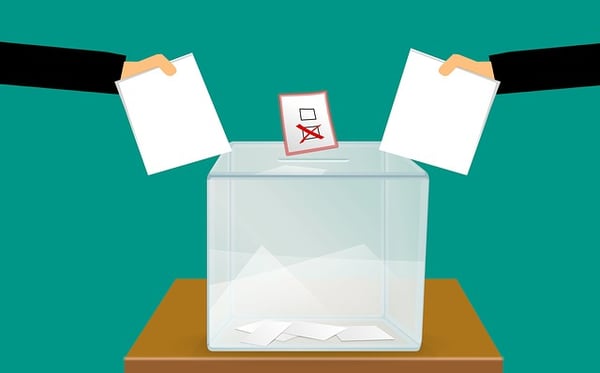
If you look closely at the United States Pledge of Allegiance, you'll see that it calls the United States a republic. It reads: "I pledge allegiance to the flag of the United States of America, and to the republic for which it stands, one nation under God, indivisible, with liberty and justice for all." So what does that mean, exactly? Can the United States be both a democracy and a republic? And what is the difference between a democracy and republic, anyway?
As it turns out, there are subtle, but important, differences between a democracy and a republic, and that the definitions aren't mutually exclusive. In other words, it's complicated. But don't worry! Knowing the differences between a republic vs a democracy is important for tons of AP exams, including both history tests (U.S. and world) and both government and politics tests (U.S. and comparative). That's why we've put this guide together for you.
By the end of this article, you'll know the definitions of a democracy and a republic, how they operate, the differences between them, and where the United States fits into the discussion.
So let's get started!
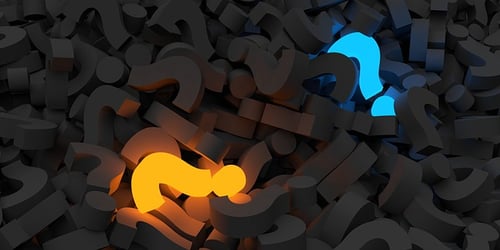
What Is a Democracy?
The term "democracy" comes from the combination of two Greek words: "demos," meaning "the people," and "kratia," which means "power or authority." Thus, a democracy refers to a type of government where the power to govern rests with a country's people rather than a ruling family (a monarchy) or a single individual (totalitarianism). That means that citizens control how their government operates, usually through voting.
The Origins of Democracy
The term "democracy" first pops up in the 5th century BCE to refer to the government in Athens, Greece. Between 508 BCE and 322 BCE, Athenians governed themselves in what is now referred to as a pure democracy. (Don't worry...we'll go into that a little later.)
Ancient Athenians didn't have anyone to represent them in government; instead, everyone had a voice—literally. Debates on topics of governance were held publicly in what was referred to as The Athenian Assembly, and every male Athenian citizen had individual voting rights. Not only that, but qualified citizens were given time off of work and a stipend to help make sure every voice was heard! Through the Assembly, every voice could weigh in on every issue, and all laws and rules of governance were established based on majority rule.
While this type of democracy would eventually be replaced by a more representative form of government, the underlying idea—that government works best when it's run by its citizens—would go on to influence the governance of most of the Western world, including the United States.
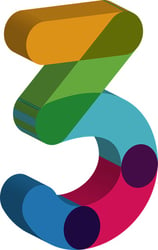
The 3 Major Types of Democracies
With growing populations and more complex systems of government, the Athenian method of one voice, one vote doesn't always work. So as the world has changed, democracy has changed with it. Here are the three major types of democracies seen in the world today.
Direct Democracy
Also known as pure democracy, direct democracy is democracy in its most basic form. Just like the Athenians at the Assembly, direct democracy lets each qualified individual shape policy by casting a direct vote. In other words, citizens are directly involved in the political process!
In this system, political decisions are made based on what the majority of voters decide. Each qualified person casts a vote, and the category with the most number of votes wins. The benefits to a direct democracy are that it lets each person, regardless of class, race, or economic position have a voice.
However, in practice, direct democracies often exclude certain groups. For instance, in ancient Athens, only male citizens had the right to participate in direct democracy. Women, criminals, and slaves—even though they were subject to Athens' laws and policies—were denied a voice.
Additionally, direct democracy doesn't always work well on a large scale. That's because there are an overwhelming number of decisions that need to be made to keep governments running.
Examples of Direct Democracy in Action
Because direct democracy can be unwieldy on the national level, there are few countries that use it as a primary governmental system. But that doesn't mean direct democracy doesn't exist anymore! Here are some examples of where you can see direct democracy in action.
Switzerland: Switzerland, a country of roughly 8.2 million people, uses direct democracy to run its local, regional, and federal governments. Every citizen over the age of 18 weighs in on how the country should be run, and because votes are so important, they are held four times a year and scheduled decades in advance. Also, as a direct democracy Switzerland lacks an elected Head of State. Instead, the country has a Federal Council which is elected by the Federal Assembly (which works like the Athenian Assembly) every four years. Each year, a new person from the Federal Council is elected to serve as president!
Local Elections in the U.S.: Because the populations are much smaller, local, municipal, and county elections often rely on direct democracy to make sure government is serving the will of the people. Local laws and referendums are often put up for a majority vote where every vote counts.
State Elections in the U.S.: Fourteen states allow citizens to design legislation and put it up for a vote through what are called ballot initiatives. Each state lets an individual citizen create a ballot initiative, and if it gets enough signatures via petition, it gets put on a statewide ballot where it passes by majority vote. The catch? In order to go on the ballot, each initiative must be ruled constitutional by the state courts, too!
Representative Democracy
The second type of democracy is a representative democracy (sometimes called indirect democracy). In this system of government, certain individuals are elected to represent the will of the people. These people, often referred to as elected officials, are chosen to vote on behalf of a specific group of citizens. These groups can be defined in many ways. Sometimes people are grouped by neighborhood, by city, by county, or even by province or state.
The idea behind a representative democracy is to streamline the process of government. Because elections where everyone weighs in are logistically difficult, having a small number of people representing the desires of the majority allow for much faster decision making. This is especially important when governments are representing a large number of people, and it's one of the reasons why many federal governments use indirect democracy to operate.
But representative democracy comes with drawbacks, too. One of the biggest problems is that in most cases, representatives aren't required (by law, constitution, etc.) to actually represent the will of their constituents. They're able to make their own decisions, which can mean that elected officials are more prone to corruption.
Additionally, there's the problem of the vocal minority. Have you ever heard the term, "the squeaky wheel gets the grease"? It just means that the people who complain the loudest are often the ones who get the most attention. So sometimes a few people who complain loudly are mistaken for representing the majority of their community.
Examples of Representational Democracy in Action
Because representational democracy works best on a larger scale, most Western governments operate this way (if the country is democratic, of course). Here are a few examples of representational democracy in action.
The U.S. Legislature: The U.S. Legislature is a federal representational government, meaning that the representatives who serve create laws that apply to the entirety of the United States. The legislative branch is split into two houses: the Senate and the House of Representatives. In the Senate, each state elects two people to represent their interests on the national level. In the House of Representatives, the number of representatives from each state is determined by population, so bigger states have more representatives. In both cases, all the representatives are elected by majority vote in their respective states. (Note: this is different than other representative democracies, like the United Kingdom parliament, where one house is elected and the other house is appointed by the Prime Minister or President.)
U.S. State Legislatures: U.S. state legislatures work exactly like the federal legislature, only on a smaller scale. Each state has both a senate and a house of representatives, and the state's residents elect representatives based on the districts they live in. This allows each state's residents to have a say in how their state is governed. (The only exception to this is Nebraska, which has a unicameral state government.)
The Canadian Government: Like the United States, Canada holds popular elections where a handful of representatives are chosen to represent the citizenry at both the provincial and the national level. The elected officials serve in The House of Commons, which is similar to Congress in the United States. Each of Canada's 10 provinces are also representative democracies where elected officials represent the will of their province's citizens.
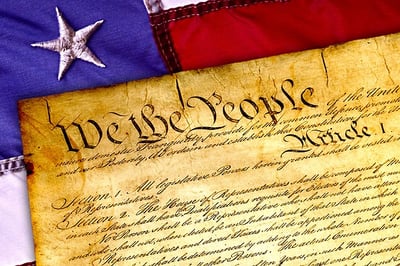
Constitutional Democracy
A constitutional democracy is the third major type of democracy in operation today. Constitutional democracies are characterized by having structures in place that limit the power of the majority. Put another way, constitutional democracies have constitutions or other governing documents that help regulate the power of those elected to office.
To do this, constitutional democracies function based on a combination of democratic principles and the rule of law. The nation's constitution serves as the highest form of law and outlines people's rights as well as what the government can and can't do. (You might say that the constitution puts limits on the government's power in order to protect citizens freedom.)
As a result, a constitutional democracy government must both uphold the constitution and still represent the will of its people.
The benefit of a constitutional democracy is that it gives a country a set of principles to use as a guide for all other decisions. It also protects the citizens by guaranteeing them a certain set of rights. (For the United States, that's "Life, Liberty, and the Pursuit of Happiness.")
However, a constitutional democracy also limits an individual citizen's ability to participate in government since there are strict legal parameters around what people can and can't do. Additionally, constitutions are very hard to change. In the United States, it takes a two-thirds majority vote in Congress or a constitutional convention (or joint meeting) called for by two-thirds of the states' governments in order to amend the Constitution! That can be a big problem, especially when aspects of the Constitution are out of date. (Check out the 13th Amendment, which prohibits slavery, or the 19th Amendment, which gives women the right to vote, to see this in action.)
Examples of Constitutional Democracy in Action
Constitutional democracies are a popular form of democracy around the world. We'll talk about a few countries that use constitutional democracy below, but if you're interested in a full list, you can find that here.
The United States: Of course, the United States relies on the Constitution and the Bill of Rights to create all new legislation. It's the job of the judicial branch—including the Supreme Court—to determine whether new laws violate the Constitution or Americans' constitutional rights. In fact, did you know can go to school to study constitutional law? You can! Check out the Constitutional Law Reporter to learn more about how constitutional law is practiced in America today.
Germany: After World War II, Germany was split into essentially two different countries, East Germany and West Germany. When West Germany was set up by the Allies, it was formed as a constitutional democracy. It wasn't until the fall of the Berlin Wall in 1991 that Germany was unified under a single constitution.
Mexico: The United States' southern neighbor is also a constitutional democracy. The Constitution of Mexico, which was ratified in 1917, was the first constitution in the world to create guidelines for social rights for its citizens, like a right to an education. (Remember: the United States initially did this through the Bill of Rights, which are the first ten amendments to the Constitution.)
But Wait...Can a Country Be More Than One Type of Democracy?
As you were reading through this section, you probably realized that the United States, along with many other countries, fall into more than one democratic category. That's because a democratic country can use more than one type of democracy to run its government. For instance, a city can use direct democracy to vote in new laws and select state and federal representatives. Those representatives then participate in representative democracy, where they speak—and vote!—on behalf of their constituents. And finally, all of these actions—policy decisions, government structure, citizens' rights, and the creation of new laws—are governed by the constitution. That means the United States is a constitutional democracy as well.
This is possible because all democracies, regardless of their organizational structure, operate on a shared set of principles. Let's take a closer look at those now.
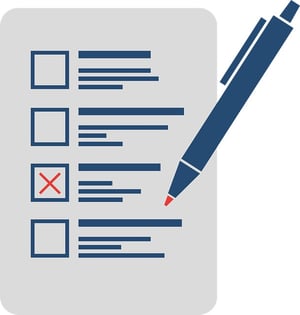
Voting is a key component of democracy
Characteristics of Democracies
Beyond just structure, democracies are also characterized by a shared ideology, or system of beliefs. According to Larry Diamond, a professor at Stanford and one of the foremost scholars in democracy studies, democracies have four foundational characteristics. We'll talk about each principle in more depth below.
#1: Free and Fair Elections
In order to make sure that people's voices are being heard accurately, democracies have to ensure that all voting processes are "free and fair." But what does that mean?
In order for an election to be "free and fair," it has to be administered in a way that allows its citizens to vote and treats all political parties and candidates equally. That means the process 1) needs to be accessible to everyone who meets voting qualifications and 2) as unbiased as possible.
Furthermore, in order to be as fair, these elections need to occur at a regular interval. If elections are only happening every two decades, that denies people the ability to make their voices heard!
Free and fair elections are important to democracy because the voting process is the way that citizens voice their opinions and, in representative forms of government, choose the people who will represent them in higher levels of government. It also puts an important check on power. If representatives are coming up for reelection regularly, it puts pressure on them to vote in line with their constituents. Otherwise they could lose their position during the next voting cycle.
#2: Citizen Participation
In order for democracy to function, its citizens have to participate in the process of government. That means people have to run for office, create ballot initiatives, petition for laws and causes they believe in, and vote. Remember that the term "democracy" means that the power to rule belongs to the people. Only by exercising that power can a nation's citizens ensure that their will is reflected in the country's laws and structures.
It's also important that in a democracy, all citizens are given an equal right to participate regardless of where they live, what they do for work, or what culture they come from. If civic participation is limited to a certain class or race, the system becomes an oligarchy instead. (In oligarchies, a small group of unelected people hold all the governing power.) When everyone has a chance to participate, it ensures that the government accurately reflects the populace, that minority populations have a voice, and that new laws are fair for everyone.
#3: Protection of Citizens' Human Rights
Perhaps most notably, democracies believe in freedom. Citizens should have the right to express their opinions and participate in democracy without fear or intimidation. Not only do democratic societies believe that creates a better life for its citizens, it also helps keep governmental power in check. If people can freely—but peacefully—express their opinions, it makes it clear when elected representatives aren't listening to the will of the people.
Even more importantly, democracies believe in the protection of people's basic human rights. In the United States, these are outlined in the Bill of Rights, and they include the right to free speech, the right to bear arms, protection from the illegal seizure of property, and the right to a trial by jury. (Not familiar with the Bill of Rights? The Bill of Rights Institute breaks it down for you!)
In other words, democracies guarantee fundamental protections to individual citizens which allows them to live in safety, freedom, and peace.
#4: Equal Rule of Law
Finally, the last thing all systems of democracy have in common is the rule of law. According to Dr. Diamond, the rule of law is fundamentally important to democracy because it protects the rights of citizens, maintains order, and limits the power of government. In other words, if elections are how citizens make their voices heard, then laws are the ways that citizens' desires are enforced.
It's pretty clear how laws work in a constitutional or representative form of democracy. In a constitutional democracy, the constitution itself lays out some fundamental laws, and no other legislation can violate them. In a representational democracy, laws are created by the elected officials in order to make sure that their constituents' concerns are being addressed. But what about a direct democracy where everyone has a voice?
Well, even in ancient Athens, the oldest direct democracy, had laws to help govern the city-state. The whole point of The Assembly was to create new policies and laws that the majority of people could agree on, and those policies would govern the entire populace!
Laws, then, are a tool people can use to make sure the ideals of democracy—like freedom and basic human rights—are maintained.
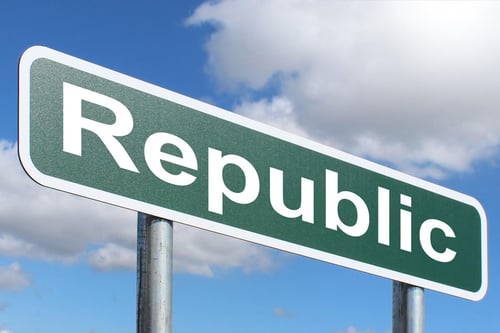
Nick Youngson/Alpha Stock Images
What Is a Republic?
Whew! Now you know a lot about how democracies function and their core ideals. Now it's time to look at a republic vs. a democracy. How are they different? Well, the answer is a little bit complicated.
The term "republic" comes from the Greek word politeia, which means the "rights of citizens." (It also comes from the Latin res publica, which means "public affair.") In modern English, a republic is a government system where the power rests with a nation's citizens.
To do this, republics use elected officials to represent the will of their citizens within the government. In other words, republics rely on a representational form of government, just like the representational democracies we talked about earlier!
Additionally, in order for a country to qualify as a republic, its head of state has to be an elected official. That means that while countries like France and Germany—which have elected presidents as heads of state—are republics. Countries with a monarch as the head of state, like Canada and the United Kingdom, are not.
So to summarize: a republic is a form of government where the power a) rests with the people, b) is exercised through representative government, and c) has an elected head of state.

The Origins of Republics
While many ancient states were republics, one of the most notable was the Roman Republic that existed between 500 BCE and 27 BCE. During this time, Rome had expanded to encompass most of modern-day Europe along with parts of Asia and Africa. That meant that Rome was home to many different cultures, and its citizens spoke 21 different languages!
This time period also marked Rome's switch from a monarchy—where a king ruled the nation—to a constitutional government.
In 509 BCE, the last Roman King, Lucius Tarquinius Superbus was overthrown and sent into exile. The Roman Senate, which was comprised of Rome's noble families, decided to institute a new type of government. The country would now be led by two elected consuls who had equal power and would serve one-year terms. These consuls were elected by legislative assemblies made up of male citizens of Rome. These assemblies also voted on laws developed by the Roman Senate.
The Roman Senate was comprised of Patricians, which were members of Rome's noble class. The Senators were appointed by the Roman consuls, and they served as senators for life. The Senate's job was to draft new laws that would be voted on by the Assembly. Over the next few centuries, the government of Rome would develop a set of guidelines and principles to govern the expanding country, which would coalesce into the Roman Constitution. The Constitution would remain one of the foundational governing documents of the Roman Empire up until its collapse in the 5th century CE.
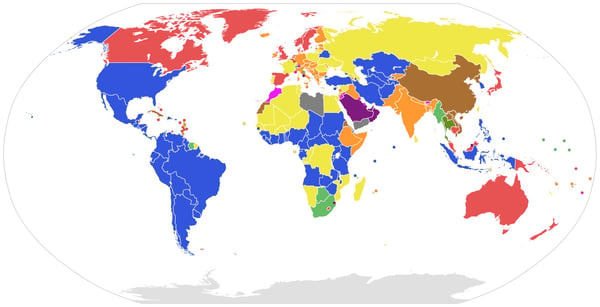
The countries in blue, orange, yellow, and green are all classified as republics.
Types of Republics Today
Remember that a republic is a nation where governmental power rests with its citizens, uses a representational government, and has an elected head of state. These are pretty general criteria, so that means there are quite a few republics today. In fact, as of 2017, 159 of the world's 206 countries use the word "republic" as part of their official names!
Additionally, the loose definition of a republic means there many different types of republics functioning today. We'll briefly discuss the major types of republics here, but you can find more in-depth information about each one by following the links in each description.
Constitutional Republic
In a constitutional republic, the government is limited by laws established by a formal constitution, which is generally secular in nature. Additionally, the government is run by elected officials who are voted on by the population, and those officials are required to follow the rules of government laid out by that country's constitution. (For more information about republics based on religion, see the section on "theological republics.")
Examples of modern constitutional republics include the countries like India and South Africa.
Parliamentary Republic
A parliamentary republic uses a parliamentary form of government in which the head of state runs the executive branch of government and the head of parliament runs the legislature. The legislature itself is comprised of elected officials that are voted into office by the country's citizens.
Examples of parliamentary republics include Greece, Hungary, and Malta.
Presidential Republic
A presidential republic allows its citizens to elect a president to serve as the country's head of state. However, in a presidential republic, the president also serves as the head of the government, too! This is different from a monarchy, where the king or queen serves as the head of state while a prime minister or president runs the day-to-day operations of the government.
Examples of presidential republics today include Brazil, Mexico, and Indonesia.
Federal Republic
Federal republics are countries that are actually a union of states, all of which operate on a republican form of government. In order to qualify as a federal republic, states have to have independence to make their own laws and decisions, as long as those laws don't conflict with policies established for the entire country on the federal level. (In this way, states function as a mini-republic, complete with elected officials and an elected head of state, like a governor!)
Examples of federal republics include the United States, Germany, and Switzerland.
Theocratic Republic
These types of republics are governed primarily by religious law. In this case, religious texts become the backbone of the nation's governing structure and are often drafted into a religious governing constitution. That means that additional laws and policies developed by the government must also be in line with religious law. Additionally, in order to qualify as a republic, these theocracies must have an elected head of state rather than a monarchy.
Examples of modern theocratic republics include Iran, Afghanistan, and Pakistan.
Can a Country Be More Than One Type of Republic?
Just like a country can be more than one type of democracy, a country can also be more than one type of republic! For example, Iran has a parliament—making it a parliamentary republic—but it also bases its governing structure on religious law, making it a theocratic republic. The same is true for a country like Germany, which operates on the principles of both a parliamentary republic and a federal republic.
In other words, much like democracies, the types of republics we discussed above are not mutually exclusive. In fact, in order for a government to run efficiently, it must often combine governing structures.
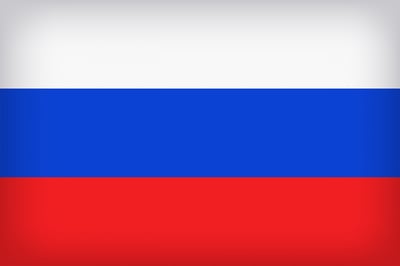
Russia is a republic but is not democratic
Republic Vs. Democracy: What's the Difference?
You've probably already noticed that republics and democracies have a lot in common, namely that they both are systems where the power to govern rests with the people. So what's the difference in a republic vs. a democracy?
The major difference between a democracy and a republic is that a republic is a form of government whereas a democracy is an ideology that helps shape how a government is run. Put another way: a republic is the system of government that allows a country to be democratic! So while people tend to use the terms "democracy" and "republic" interchangeably, they aren't exactly the same thing.
The best way to understand this difference is to look at examples where a republic style of government isn't democratic. To do this, let's talk about two non-democratic republics: Russia and North Korea.
Russia
The Russian government, like many other nations, is set up like a republic. According to the Russian Constitution, the Russian president—which is elected by the Russian populace—is the head of state and runs the executive branch of government. It's the president's job to appoint a prime minister, whose job it is to run the government on a day-to-day basis.
But in reality, Russia has operated more like a dictatorship than a democracy under current President Vladimir Putin. Although the president and other government officials are elected by popular vote, the Russian government also limits Russian citizens' freedom, including suppressing free speech and controlling access to objective information.
North Korea
North Korea's government is set up much like the United States' and is split into three branches: the executive branch, the judicial branch, and the legislative branch. By law, the citizens in North Korea elect officials to the legislative branch through popular vote, and the legislative branch passes laws on behalf of the people. (That's why North Korea's full name is the Democratic People's Republic of Korea.)
In actuality, North Korea is classified as a dictatorship. The current president, Kim Jong-Un, inherited his position from his father. Additionally, elections in North Korea are largely for show—only one candidate runs for each position, so people really have no choice in their representation. Beyond that, the government severely limits people's ability to travel, so much so that many North Koreans have to pay people to smuggle them out of the country. So despite having a republican government structure—and having the term "democratic" in their country's name—North Korea doesn't function like a democracy on a day-to-day basis.

The United States: A Democratic Republic
So that leaves us with one final question: what type of government is the United States? Where does the U.S. fall in the republic vs. democracy debate? The answer is that the United States is both a democracy and a republic!
The U.S. as a Republic
When the founding fathers were writing the U.S. Constitution, they envisioned the United States as a republic. Alexander Hamilton and James Madison made this clear in The Federalist Papers, where they make it clear that the federal government will be made up of elected officials who represent the will of the people. In fact, many of the United States' founders believed that a direct democracy would result in nothing more than "...instability, injustice, and confusion." As a result, the U.S. Constitution outlines a system of government that allows people to fairly vote on representatives, and those representatives make laws in accordance to the people's will. Each of the states' governments are set up in the same way, which means that the states are mini-republics, too!
Additionally, in order to be a republic, people must elect the person who will serve as the head of state. This is certainly true in the U.S., where citizens vote on who will serve as president of the country every four years (though whether this is a direct or indirect vote is a subject of debate thanks to the electoral college).
Considering all of this, the United States works as a combination of a constitutional, presidential, and federal republic!
The U.S as a Democracy
Remember that the difference between a republic and a democracy comes in how each of those ideas functions in government. So if the United States is a republic because of how the government operates, it's a democracy because of why it operates. In other words, the U.S. runs its government like a republic, but it bases its government on democratic ideals.
In order to operate as a democracy, the United States has to have free and fair elections, citizen participation in government, protect citizens' human rights, and honor the rule of law. The United States meets all four the criteria to qualify as a democracy.
In terms of elections, the U.S. holds regular elections for its elected officials at regular intervals, and any qualified U.S. citizen is allowed to cast their vote for their representatives. Additionally, these representatives are other U.S. citizens. Roles in government aren't passed down from family to family—all citizens in good standing are welcome to run for office regardless of class, gender, or culture.
But what about guaranteeing human rights? One look at the Bill of Rights makes this clear. Not only do the amendments to the U.S. Constitution make guarantees about equality and freedom, they also serve as a set of protections for all U.S. citizens from the overreach of government power.
And finally, the U.S Constitution serves as the country's guiding legal document. All other laws must first uphold the laws and rights outlined in the Constitution first!
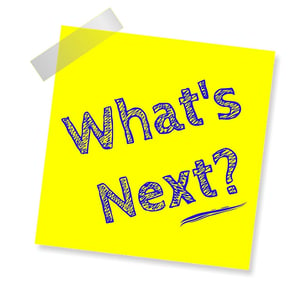
So Now What?
Are you reading this post in preparation for the U.S. History AP Exam? If so, you should also check out some of our other resources! We have subject-specific posts like our NATO overview and a complete guide to AP U.S. History books.
If you're a freshman, sophomore, or junior, you might consider adding a few more AP classes to your schedule. Here's a complete list of AP courses and tests to help you choose classes that are perfect for you.
Are you also considering taking the SAT subject tests in addition to—or instead of!—an AP exam? Make sure you get the inside information on both before you make your decision.
Have friends who also need help with test prep? Share this article!

Ashley Sufflé Robinson has a Ph.D. in 19th Century English Literature. As a content writer for PrepScholar, Ashley is passionate about giving college-bound students the in-depth information they need to get into the school of their dreams.

































 Holly R.
Holly R.